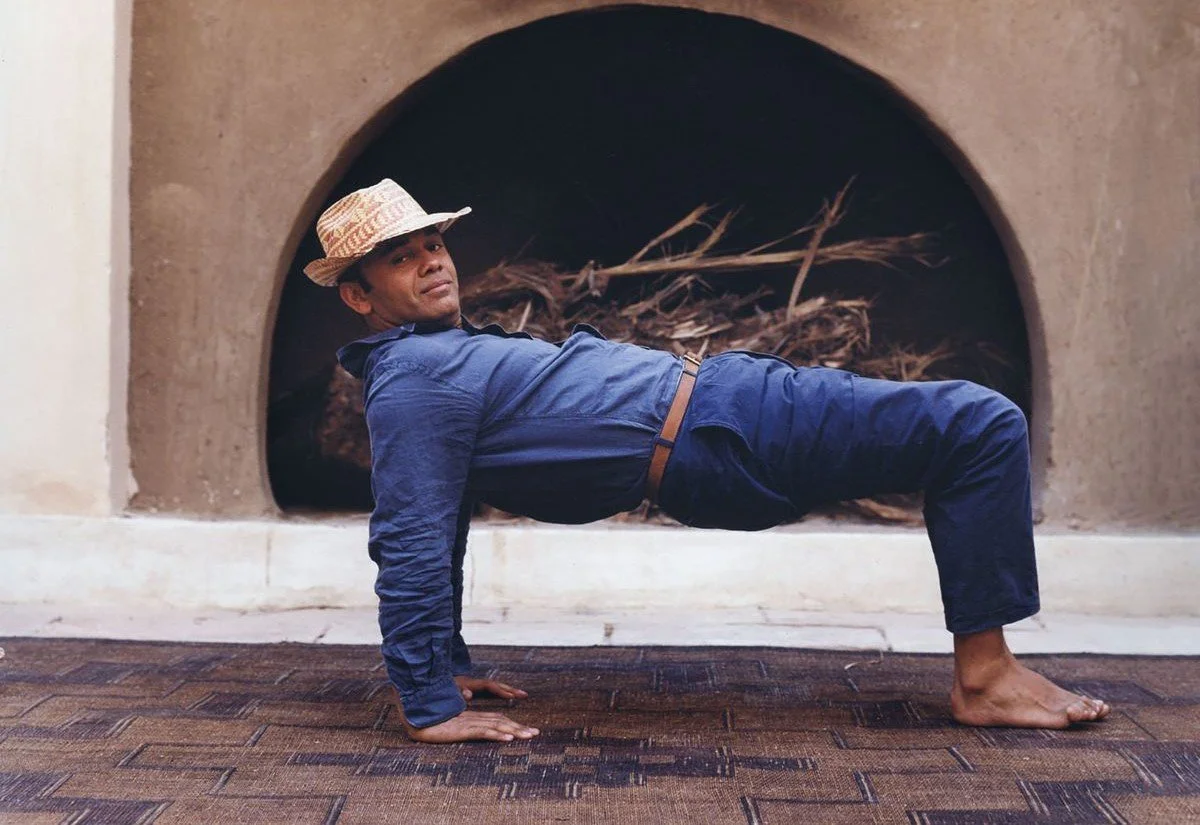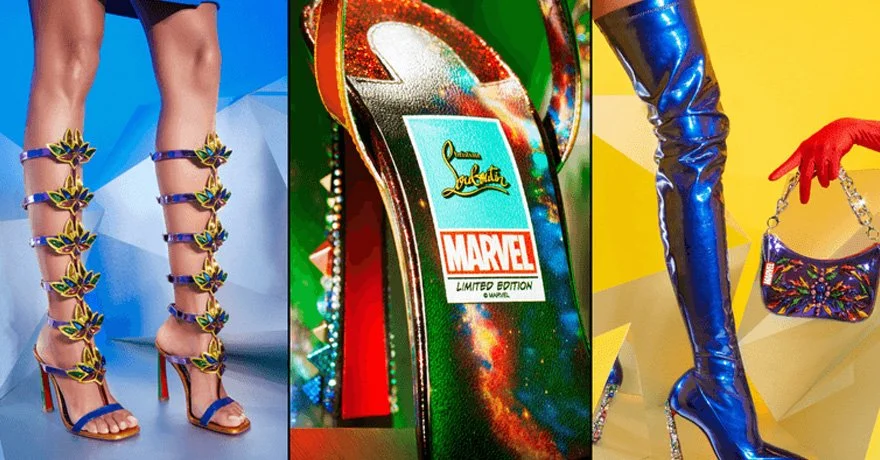From Ancestry to Artistry of Christian Louboutin. Celebrating Culture Through Fashion.
Christian Louboutin is undoubtedly the name that doesn’t need an introduction. For more than three decades, the French fashion house has set the benchmark for luxurious high heels in the industry. Louboutin is renowned worldwide for its impeccable craftsmanship and iconic scarlet-red soles, and the phrase "red bottoms" has become synonymous with the brand itself.
Yet, beyond the glamorous allure of the luxury brand lies a remarkable story of self-discovery, and recognition of the creator’s own heritage. In this article, we will delve into the life of Christian Louboutin, and discuss how the famous creator has turned his unique characteristic into a superpower.
We’ll explore how acknowledging his Egyptian roots has shaped and strenghtened his self-identity, and influenced his esteemed fashion brand.
About
Christian Louboutin
Born: 7 January 1963, Paris, France
Occupation: Fashion designer
Active since: 1991
Initially a freelance designer for fashion houses, Louboutin launched his own shoe salon in Paris in 1992, and shortly earned recognition of celebrity clientele, who found “subtle status symbol” in his iconic luxury footwear, handbags, fragrances, and beauty products.
The Journey of Self-Discovery
Louboutin was born and raised in Paris, to the family of Roger, a cabinet-maker and Irene, a housewife from Brittany. He had three sisters, and even though he grew up in the atmosphere of love and care, he had always felt… different.
In a 2012 interview, Louboutin mentioned one of the reasons – he had much darker complexion than everyone else in his family, and even suspected he was adopted.
How did he deal with feeling like ‘the odd one’ at a young age? As a natural creative, he handled the problem creatively:
“instead of feeling it was terrible and that I was an outsider who had to go and find my real family, I invented my own history, full of characters from Egypt, because I was very into the pharaohs” . (1)
Although the designer maintained a strong affinity and interest for Egypt, he believed his background was solely French. Only at the age of 50, he discovered his true French-Egyptian heritage, as one of his sisters revealed the truth about his biological father - an Egyptian man who had been in a secret love affair with his mother Irene. (2, 3)
It must have been shocking to have stayed oblivious for most of one’s, only to discover the truth by 50 years old. But Louboutin wouldn’t be Louboutin if he didn’t accept the news with curiosity. The designer opened up to Belfast Telegraph that he was rather surprised to learn about an unexpected fact in his mother’s biography, than about his own new-found ancestry:
I was surprised and not surprised". (4)
“I never even thought that my mother had a lover; my parents were a very solid couple. But “while I was shocked, the news went into my body immediately and I completely accepted it, no problem” . (5)
In a way, the news helped the designer draw the parallels and understand where his ingrained passion for Egypt might have come from.
Ruben Modigliani
Sole-searching
Since very young age, the Christian Louboutin has been fascinated by all things Egypt: culture and history, architecture and antiquities, art and mythology, and found a profound inspiration in the overall aesthetic associated with the ancient civilization.
In an essay for Financial Times, Louboutin reminisced his teenage years and shared his thoughts (5):
“When you’re at school in France, everyone learns about ancient Greek, Roman and Egyptian civilisations, and you often start to be obsessed with one. If you liked sports and organisation, you probably loved Rome; if you liked politics and philosophy, you probably favoured Greece; and if you liked animals, mystery, illustration and fantasy you might be more drawn to Egypt”.
No surprise, a creative mind and a romantic soul like Louboutin was drawn to the mythical land of the Pharaohs:
”I loved the Egyptian gods who were half-human, half-animal; the mythology; the statues – the sphinxes and the obelisks – and the architecture”.
Interestingly, Louboutin’s home, Paris, was a good starting point to familiarize oneself with the cultural heritage of Egypt:
“When you are born and raised in Paris, even if you have just a little interest in Egypt, you can see it everywhere. Yes, in the Louvre, but also in the streets – in the Place de la Concorde you have an obelisk, or you have fountains with sphinxes… In the cinema I loved Cleopatra with Elizabeth Taylor; in books, there was Astérix et Cléopâtre”.
He recalled his first trip to Egypt at the age of 17, where he visited the Dahshur pyramids and attend the excavation of antiquities:
“It was illuminating”, “I felt as if something was telling me that there are greater things; bigger things than myself.”
After this truly transformative experience, the future designer started to travel frequently to the country. Further, in the early 2000’s, he even bought a property in Luxor and a boat on the Nile. And later on, became a patron of The Colossi of Memnon excavation mission.
The journey to Egypt was a journey of self-discovery. And yet, the designer realised that he had already been so naturally connected with the land, that the new encounter with the land, after hearing the truth about his ancestry from the sister, surprisingly wasn’t a life-changing moment:
“When I came back to Egypt, I thought, I’m going to touch the land and feel Egyptian, or whatever. But nothing happened! I mean, you know, life kept on. Nothing changed. But I still have that connection. It’s ingrained”.
We have just observed, how over the years, Louboutin’s interest in Egypt grew into a passion. The passion grew into connection. The connection graduated into self-identity. Egypt has not only become Louboutin’s center of gravity and spiritual ‘home’, but also a limitless source of inspiration and the ultimate driving force for creative expression.
Collections Inspired by Egypt
The Scarabée collection, 2015
In 2015 limited-edition collection ‘Scarabée’, Louboutin found inspiration in the scarab beetle – an amulet of the Pharaohs and a sacred symbol, worshiped by ancient Egyptians.
“They can look beautiful and reflective under the bright sun but also look like a precious jewel by night,” – the designer described the beetle.
Fascinated by the scarab beetle ability to reflect two or more shades at once, the designer introduced a collection of three metallic nail lacquers:
Scarabée I, a soft, rose and gold metallic shade;
Scarabée II, a deep blue shade with hints of purple, emerald and gold;
Scarabée III, a bronze shade with green and blue sub tones.
The bottle design adhered the collection theme, featuring an elegant, tall golden cap, and brown carton packaging, adorned with a copper gold scarab emblem. The little a window on the carton revealed the shade of the nail lacquer and represented the iridescent body of the beetle.
The collection also featured new shoe designs, for which Louboutin also developed a new blue-to-green patent leather, matching the Scarabée II nail lacquer. The leather was given the name “Scarabée Ocean-Amazone”.
Christian Louboutin x Marvel Capsule Collection, 2023
What is common between Ancient Egypt, luxury footwear and Marvel Superheroes? Christian Louboutin!
In a remarkable fusion of fashion and pop culture, the highly anticipated 2023 capsule collection brings forth a collaboration between the French fashion house and the American entertainment and publishing leader, Marvel, celebrated worldwide for its captivating comic books and thrilling superhero movies.
The colorful selection of limited-edition footwear and accessories for men, women, and children is a fusion of Christian Louboutin's unparalleled mastery and Marvel's legendary storytelling, designed especially for ardent fans of the Marvel Universe.
Alongside the capsule collection, Marvel produced an exclusive comic series, introducing a new "superhero" – none other than Christian Louboutin himself. Christian Louboutin’s lead character is an Egyptian archaeologist, inspired by his North African heritage and his deep affinity for Egyptian mythology, and love for the superheroes. The Louboutin’s hero is integrated into the world of some familiar Marvel characters such as Shuri, Black Widow, the Guardians of the Galaxy, and the Avengers.
This unique comic strip displays 23 pages of bold sketches, animated typography, and a narrative that immerses the reader in a visual adventure, seamlessly merging the world of fashion, fantasy and exploration.
(Red) Bottom Line?
Christian Louboutin is not alone on this journey of life-long self-discovery and creative self-actualisation.
Across the world, from Los Angeles to Milan, from Tokyo to Berlin, ethnically diverse designers are embracing their heritage as a boundless source of inspiration. And their stories may indeed make one ponder:
Are the expressions 'New York sophistication', 'Indian opulence', and 'Russian beauty' actually as linear as they may seem?
What comprises 'Mediterranean chic'?
What is fused in the 'Asian fusion'?
Cultural diversity has always been closely intertwined with creative industries. The world of art and fashion has power to foster social understanding, tolerance, and unity, by integrating differing opinions and beliefs. In turn, multiculturalism, being a continuous exchange of unique ideas, is precisely what propels creative sector toward an innovative and prosperous future.
Cultural diversity isn't merely a tapestry of tastes, textures, and traditions stretched around the globe. It's the spark that ignites fresh perspectives, fuels innovation, and empowers creative minds to authentically express themselves. It’s a dynamic force that deserves celebration.
References
1) Ramaswamy, Chitara (8 May 2012). "Interview: Christian Louboutin, shoe designer". The Scotsman. Archived from the original on 20 May 2013.
2) "Christian Louboutin: The World's Most Luxurious Shoes". Documentaries. 11 August 2015. Channel 4, UK. Archived from the original on 21 August 2015. Narrator: Fiona Flynn.
3) Sowray, Bibby (12 August 2015). "11 things we learned from Christian Louboutin: The World's Most Luxurious Shoes". The Telegraph. Archived from the original on 14 August 2015.
4) Shoe designer Christian Louboutin tells Katrin Israel about a family revelation, why he'll never do a high-street collaboration, and his new-found enthusiasm for keeping fit. Belfast Telegraph. 2018
5) How I Spend It: Shoe designer Christian Louboutin on his passion for Ancient Egypt. Christian Louboutin for Financial Times. 21 May 2021.





